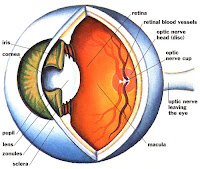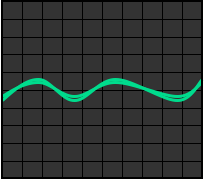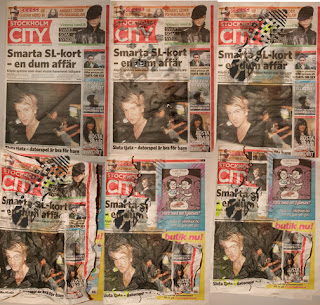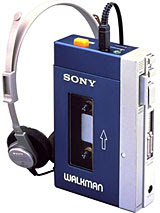 Read all about it on our wiki
Read all about it on our wiki
Friday, November 30, 2007
Wisdom comes

We have begun to understand how to go on with the project and have decided to go with visualizing/musicalizing loss of information. Johannes and Andreas, who's got programming and musical skills, will try it out, see how it goes and how the idea can be twisted and be imbroved.
Thursday, November 29, 2007
Friday 30 schedule: Federico Favero's Lecture@11 - mid course presentations @13
On the Reel..
Some fun we checked out..
http://www.youtube.com/watch?v=M3txotMZxX4 Drawning soundwaves with a “stylus”
Oscilloscope
The Big Loop

One more..
http://piffen.rautermods.net/komrum/071123_pres_comic.pdf
And this is the presentation we showed. And text.
http://piffen.rautermods.net/komrum/071123_pres.pdf
http://piffen.rautermods.net/komrum/manus2.doc
Reblogg
http://piffen.rautermods.net/komrum/071121_pres.pdf
http://piffen.rautermods.net/komrum/manusKOMRUM.doc
It's about the stylus and how we linked it to ageing..
Wednesday, November 28, 2007
Summery of the project this far!
We started last week to look at different aspects of ageing in fashion. It was interesting but the topic "fashion" was to wide.
We narrowed it down to jeans and started to look and compare different ageing processes that could be similar to both jeans and humans. For instance jeans can be given an old look (age unnaturally) if you treat them in different ways so that they will be worn out, you speed up the ageing process. In the same way the human body will age unnaturally if you treat it with different kinds of chemicals and other things that, in a way or another, will break down and age the body.
We found these different ways to speed up the ageing process very interesting, and started to look closer on how you could put more value into something by making it feel and look older. We have now focused on jeans and T-shirts, but we are also trying to find other materials that we will be able to put some more value in by ageing it.
We have been trying different methods to make jeans look worn, and our big conclusion so far is that it's hard to give the material the correct amount of aged feeling. We are now in a big training-camp where we practice to find this perfect amount of ageing.
Meanwhile we practice on test objects, we have bought a pair of jeans that will be our main object. We have started to wear the jeans and at the same time we are spraying water at the "whiskers" to make them stiffer and more easier to, for example, sandpaper down to give them a worn look.
We are planing to continue to work with our main object, in a controlled way where we always do big researches on the different ageing methods before we apply them on our main object, so that we are able to find the correct amount we'll have to use to give it the perfect look. This isn't as easy as it seams, but we are working on it.
/Destruction-team
Group 9 - The Clockers


Thoughts
A way to emphasize contrast could be to project light through bars (or any shape) on a picture, so that only some areas become brighter. This would give the image an artificial contrast. It would show the difference between enlightened and darker areas, and thus create contrast.
You could also transpose the ageing of light to sound, which wouldn't give exactly the same result as the ageing of sound itself.
After talking to Antonio today we decided to look att ageing through a camera. We've tried to recreate age diseases as catarct by putting different pieces of plastic in front of the camera. You can actually get decent results when it comes to halo effects and generally blurred vision. The problem is, while working with plastics, there is no way to reverse the aging effects without using photoshop. And even if we used photoshop, we wouldn't be able to recreate the original image, although we could probably enhance it somewhat. We might be a bit stuck again, since the experiment gave no clear results. We would have liked to use lenses instead, to be able to reverse the damage made from other lenses. This would have given us the opportunity to take pictures both with the damaging lense, both of the lenses (damaging and correcting, which would have given an ok image), and only the correcting lense. Both of the lenses alone would give a "wrong" picture. Although the correcting lense alone would make it right, in a way. Confused? Yeah, we're not really clear about that concept eithter.
Something else we've learned is that when stuck, it's best to take a couple of steps back, and start working again. If you don't do this, you only increases the frustration.
The ideas
1. We thought about using a laser which we would send through and to different objects for reflection and effects from "filters". This would "destroy" the laser and in the end it would be less bright and not as sharp as in the beginning. This would resemble the ageing of the eye. The objects that we would use for this would be different things that we use through our lives, a part of our ageing.
2. The aged eye. We thought we would build a dark room and project a picture on one wall. The picture is "destroyed" with different filters to make the illusion that the picture is seen through an old eye. This would show how destroyed the picture is when it reaches the cornea.
3. The intellectual white balance. We would change the expression of known pictures, like well known logos from big companies; Mc Donalds or Coca Cola for example. We would change the expression by changeing the light and destroy the picture with different filters. The question here is, can we achieve an ageing effect by changeing only the lights?
4. A light room, insread of a dark room. This idea is about making the room so bright light that you can't see the contrasts or the colors in the pictures we would have in there. This would also change the whole expression of the picture. We want to show how easily you can get dazzled by bright light when you grow old.
We are thinking about these ideas but we are still open for new ones.
The Process


We started out with a presentation about money and tried to relate money to ageing. But we thought this was quite hard and we didn't get anywhere with it so we changed our object instead. Our last presentation, as some of you know, was about the eye. More precise, about the lens of the eye, and the rubber band as a metaphor for it. We are now focusing on the ageing of the eye and what kind of problems elderly people have with their sight. Some of the problems we have talked about is:
Katarakt (grå starr) which means that your lens is getting "blurry". It can bring that you can't see contrasts as before. Your eyes get more sensitive to bright light. You can't see as clearly in the dark as before. You have a problem seeing colors as they are supposed to look and you can get a problem with seeing "double". To decide the distance between different things can alsto be a problem.
Glaukom (grön starr) which is a damage to the nerve in the eye. It is caused by a change of the preassure in the eye. It can make your eyesight more blurry and you can get difficulties in your field of vision.
Makula (the yellow spot, gula fläcken) is also affected by our age and that we grow old. The yellow spot is the spot where the cells are closest togehter and that's where we see with the best sharpness.
With this information and basic information about how the eye works, we decided to focus on color and brightness. Both color and brightness are affected by ageing and we thought that we maybe could do something fun and interesting with that.
Grupp 10

The Process
We started out with the computer but soon realized that we actually talked about the internet. This topic was far too wide and complex. We needed to narrow it down to a less complex object. We went from the internet to the safety net, like the ones you use during dangerous circus acts. We thought that every string in the net could symbolize ones memories and experiences, and that the net gets bigger and more dense as you get older and gain more experience. After a talk with Antonio, he told us that it was to abstract and that it was only a metaphor and not an analogy. He suggested that we could discuss the hard drive and how it works like the memory. Since we're not so keen on working with computers we decided to focus on the photo album instead. We thought of the photo album as a representation of memories and how that is connected to how you store memories in your brain. We dug a little bit further in how the human memory works and how it's connected in the brain.
After exploring different routes we now feel like we have stumbled upon the right one, the episodic memory (picture). This is where the brain stores memories of events and episodes. This is also where the memory looses its capacity as you grow older. From this we will create our installation.
Federico Favero's lecture on Light Design Course is postponed.
Mid course presentations will start at 13.00. Federico (light designer, KTH) will be part of the guest critics together Peter Ullstand (communicative spaces course examiner) and Jörg Frank Seemann (light designer, Master program attendant, KTH).
Each student presentation will concern the design process that each group is following: the starting point of the project, research and actual state and the future development that will eventually lead each group to the final project.
Group 3: Hearing and the synapse destruction

So today, we discussed about how to be concrete and how to do a specific presentation that looks at the subject on the biological ageing of human.
We tried to come up with alternative ideas. The next topic was to do a graphic visualisation of synapses losing contact to the nerve cells when the human gets old. We tried to do a research so the facts would be correct. After researching we found out that the course of events was not as dramatic as we hoped.
We finally asked Antonio Scarponi about how realistic our presentations should be. He answered that we are storytellers that can make up diagrams and stories. So we agreed that we could present both the synapses visualisation-project and the sound-simulation.
Turbulence Art
You could resemble the velocity of the flow at a given time and place - an unpredictable amount of kinetic energy - to the energy-level in a human being at different times at his or her life. For example, you could be happy and very active at some time, depressed and inactive at other times and so on. Statistically though, you can see that as we age, the energy-level also slowly declines.
In turbulence, big whirlpools are created at first, which then become smaller and smaller whirlpools, and eventually dissolve, where the kinetic energy becomes thermal energy, resembling death.
In other words, the ageing process in regard to energy-level, can be viewed upon as a turbulent flow; you can’t predict the energy-level at a given time, but statistically you can say that the energy-level declines as we age.
Another way of expressing turbulence is that it happens at big Reynolds numbers. The Reynolds number (a number used in fluid dynamics), simplified can be seen as measurement of the viscosity of a fluid, which describes it’s resistance to flow - a bigger Reynolds number means a higher flowing resistance in the liquid. A big Reynolds number also means that the flow is more sensitive to disturbances.
Now we can resemble the Reynolds number to the age of a person, which is also a number. As a person grows older, they won’t be as vigorous as they were when they were young; they’ll move slower, talk slower and so on. Also the turbulence in the ageing process will have increased, since they, for example, grow a bigger chance of getting certain diseases as they become older, which in turn affect the energy level. They also become more sensitive to disturbances (as with big Reynolds numbers), since for example a flu will have a much greater effect on an old person than on a young and healthy person.
Tuesday, November 27, 2007
Grupp 8 - Alzheimers
Monday, November 26, 2007
Group 6: Destruction (post 1)
After two presentations last week, we have now start "for real" with our project.
Starting with a big brainstorming on various things we could use as material and various ways of destruction on the different materials.
Destruction in a way to make the material more valuable!
We have collected different "tools" that will come in handy when we are going to let out our "rage" towards our different kinds of materials, for example jeans and T-shirts.
We are especially excited to melt stuff.
Tomorrow the big destruction will begin!
/Group 6

Group 2 (post 1)
Feel free to look around there regularly since work will be ongoing.








